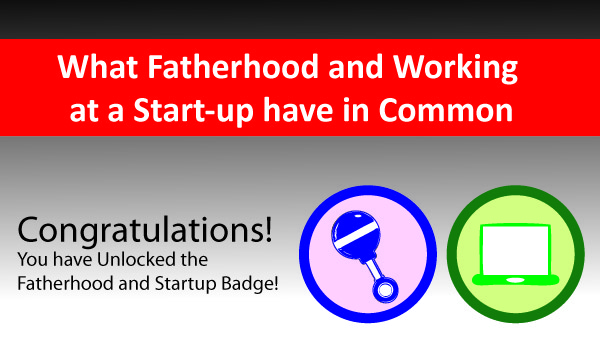So as everyone has probably heard already, I recently lead the charge to launch a new startup called Printchomp. I started this back in April and needless to say it has been a whirlwind. I have had my share of highs and lows building something from nothing and it was nothing like I have ever done before. It drew a perfect parallel to another adventure I decided to undertake this week (this one purely by accident). I was out for a simple 5km run 2 days after launch and I decided, what would happen if I just went a little bit further. That little bit further turned out to be 41km, just shy of a marathon distance run. I had never run this distance around the Bay before, but I had a voice in my head saying to me push a little further. My longest run for the year was 14km and mostly downhill so, was I skeptical if I was going to make it back. I guess that is the thing when you start a business or push outside of your comfort zone, you have to believe you are going to make it. The run to me became quickly a metaphor to starting a business. You have to be willing to put yourself in harms way, receive the slings an arrows of potentially failing to achieve your goals. I became aware of on the run, no one was there to save me but myself. The success of your business rests on a the edge of a sword, and depending on what you are willing to put into it. You may just fail or you could succeed beyond your wildest dreams. After getting to the finish line after a long run or a new launch, A new race begins. The voyage of turning an MVP into a service that the masses want to use. The brief glory, of getting to the finish line is quickly eclipsed by the reality that your race has only just begun. In many ways the run was very cathartic for me. It gave me an opportunity to put things into perspective but also focus on the task at hand. It gave me an opportunity to look back on my failings and look for ways to improve and get better. Self reflection is a tricky thing, you have to pull away all of the noise and focus on the what is most important. Mind you on a 41km run you have a lot of time to think about a lot of things (Very Forrest Gump of me I know). I thought about previous jobs, people I...
Read More30 days out from launch I was reflecting on the top things I need to do to help make my company as successful as possible. Here were the top 5 things 1. MVP, MVP, MVP – This isn’t the time to get fancy with all the bells and whistles. You can always build them later. This is about making sure your system works. The question here should be “Is the baseline user experience working?”. I have been tempted to ask for this, that and the other. At the end of the day, the system needs to work in its purest form. 2. You are the Quality Assurance and the product manager – Testing is never a fun activity, but guess what? It is your responsibility to go out and test every freaking button, every square pixel of your user experience. IT IS YOUR RESPONSIBILITY TO FIND ALL OF THE BUGS! 3. Focus and inspire your team – As the fearless leader of your team, it is your job to keep everyone pumped and excited and firing on all cylinders. It is easy for everyone to get distracted with background noise. Whether it be showing up with pizza while everyone works into the night, or passing on an encouraging word to someone who is really rocking it, it is your job to help everyone stay on their A game. 4. Prime the pump – Work with your perspective partners and customers ahead of time. If you haven’t done this yet, this is the time you want to start speaking to them. You want to hit the starting line with a running start not with a dead stop. This will rapidly help and ensure you will get moving faster. 5. Ask for help – You are only one person. Although you may be running yourself ragged to be all things to all people internally and externally, you need to not be afraid of asking for help. Friends, family or colleagues (assuming that you haven’t pissed them off) are generally more than willing to help you. Make sure you keep track and get ready to thank those people when you achieve what you set out to do. More times than not, people can forget or not be appreciative to all the people that helped them along the...
Read MoreLately, I have had the opportunity to sit across the table for a coffee or a beer with a lot of technically talented people. Some of them I have actively recruit into Printchomp, because I recognize their skillset and ability and what they bring to the table. I have however seen some irritating trends. So people may be working on their pet project, which is totally fine, but then as an after thought they wonder how can I get millions of people to using it. This point leads me to my general hypothesis: that there are two equally important parts to balance the equation, the business part and technical part. I just sat in on a MBA class of students pitching their company ideas, and one resounding thing came back time and again. Many spent the presentation talking about a cool new technology, but not the pain it was solving. This is how I feel sometimes when I am listening to pure technologists describe their product to me. Yes it might be technically excellent but why the hell would I want to use it? There are some interesting lean principles regarding validation and testing hypotheses that can help pure technical people avoid those traps. That said I don’t think enough technical folks test those assumptions. It really comes back to why are you building this feature or product. One of the other judges at this university pitch presentation hit the nail on the head, build what you can sell not sell what you can build. I will go to my final point. There is a lack of respect for marketing and business development. Converting people to using your service or product doesn’t “just happen”. There are some instances where things can strike a nerve and go bonkers, but the vast majority of things need to build an audience. Audiences are built using good messaging and tactics, executed by a person who knows what they are doing. If you are an engineer and approach a friend to help you with marketing, don’t expect that they will impart all their knowledge in 10 minutes. Imagine your disgust if they expected you to tell them all about development in 10 minutes, it ain’t gonna happen. People need to consider tough questions like Cost Per Acquisition (CPA). They also have to know whether it is even worth it to acquire that customer, if you don’t have a downstream strategy, what is the point. One company in the pitch competition was stating their key differentiator to Dropbox was unlimited storage. I went on to painfully explain how one user could effectively break their business...
Read MoreWarning! This doesn’t apply to everyone who has tried to pitch me a story, but enough for me to write this blog post. Please don’t jump all over my head thinking that I am referring to you. When I started off as a part-time rogue blogger, I found it easy to write on things I found interesting. As the regularity and velocity of my blogging picked up, I found an interesting trend emerge. I now get a regular steady beat of requests to write about their start-up or a weird obscure thing going on in their company. Now don’t get me wrong,I come across a few real gems and legitimately interesting things going on. However, I drill down a bit further on why many of these companies are so actively seeking coverage (especially the ones that I find a bit dubious) and have found an alarming, but not surprising trend. Many of these companies are using coverage to mask the fact that their company has significant holes in it. It could be that their business is a “me too” company or that they are not nearly as far along as they claim to be, or even that the number of active users they have on their system just isn’t really interesting. Let me set the record straight: as a marketer, going after coverage is a perfectly acceptable and smart way to help advance the goals of your start-up. I am in the process of launching my own start-up right now (Printchomp – shameless plug alert) and PR will be a corner stone of driving user sign-ups and interest in the company. That said, if you are no where close to achieving product-market fit, your User Experience absolutely sucks or you’re a shameless knockoff of another site, maybe you don’t want to be pushing so hard for coverage. Even if all those items are fixed, you also have to make sure you have a compelling reason to actively pursue coverage. A veiled excuse to get backlinks from a major tech blog isn’t enough in my opinion. So before you send out an article request to piss off yet another tech journalist, ask yourself a key question. If you receive coverage, will it materially fix any of the day to day problems your start-up faces? It is like using wallpaper for structural support in a building. It looks nice, but it won’t keep your house from falling...
Read MoreI became a father over 5 months ago, and it has definitely been a game changer in my life. I have also been involved in several start-up companies both before and during my foray into fatherhood. However, since I became a father, I found there were some very interesting similarities to working in a start-up. 1. Noticing the smallest patterns Whether it is managing your product or your baby, it is all about spotting the small patterns. What is causing them to respond, what do they like, what don’t they like? It could be the slightest difference in what you do or how you do it but it can have an impact. Discovering those patterns is key in helping to scale your business or keep your baby happy. If you are able to discover what makes your baby happy, you can replicate it, and use that knowledge in other situations. Feedback is key to the entire operation. Granted, a baby’s cry is significantly more ambiguous than a clear pattern in business, but over time you start to learn what they need. Now, I wish that my baby was as easy to understand as my customers, but again it requires a combination of intuition and testing in order to figure out the best way to approach things. Start-ups, like fatherhood, require constant and regular iteration. If your baby is not responding favourably you can’t keep doing the same wrong thing for a day, a week or a month. Start-ups are no different, from the standpoint that you can’t afford to sit on bad strategy or tactics long. In learning to live life with the baby, you need to see how the situation evolves and continually iterate while noticing patterns in the chaos. 2. Serve multiple constituents I find you need to serve multiple constituents when you become a father. Think about it this way – your baby is your client, your wife is your co-workers and your parents are your investors. Your baby is everything, and you need to be responsive and serve their needs. Respond in a timely fashion and keep them happy. With a baby, your pay-off is a smile that warms your heart. The correlate pay-off in business is word-of-mouth referrals from your clients. Your wife/partner is in many ways your co-worker or staff. You are both working together towards a common purpose, but sometimes get worn down by the constant demands of the baby (or client!). In this case, it is important to look for opportunities to alleviate stress and do little things to show that you care even in the face of adversity. Sometimes a...
Read More



